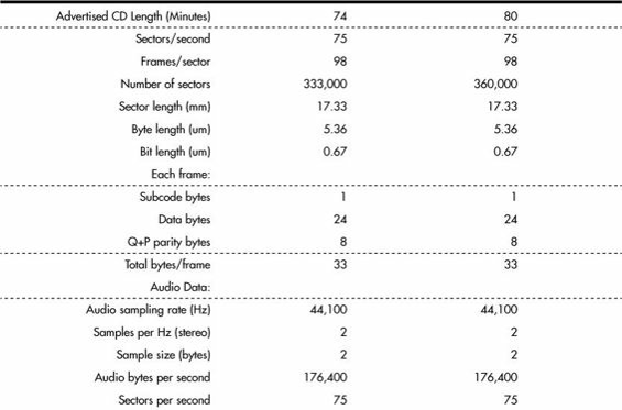Hardware Reference
In-Depth Information
bytes are audio data, 1 byte contains subcode information, and 8 bytes are used for parity/ECC (error
correction code) information.
Table 11.2
shows the sector, frame, and audio data calculations.
Table 11.2. CD Sector, Frame, and Audio Data Information
Sampling
When music is recorded on a CD, it is sampled at a rate of 44,100 times per second (Hz). Each music
sample has a separate left and right channel (stereo) component, and each channel component is
digitally converted into a 16-bit number. This allows for a resolution of 65,536 possible values,
which represents the amplitude of the sound wave for that channel at that moment.
The sampling rate determines the range of audio frequencies that can be represented in the digital
recording. The more samples of a wave that are taken per second, the closer the sampled result will
be to the original. The Nyquist theorem (originally published by American physicist Harry Nyquist in
1928) states that the sampling rate must be at least twice the highest frequency present in the sample
to reconstruct the original signal accurately. That explains why Philips and Sony intentionally chose
the 44,100Hz sampling rate when developing the CD—that rate could be used to accurately
reproduce sounds of up to 20,000Hz, which is the upper limit of human hearing.
Subcodes
Subcode bytes enable the drive to find songs (which are confusingly also called
tracks
) along the



